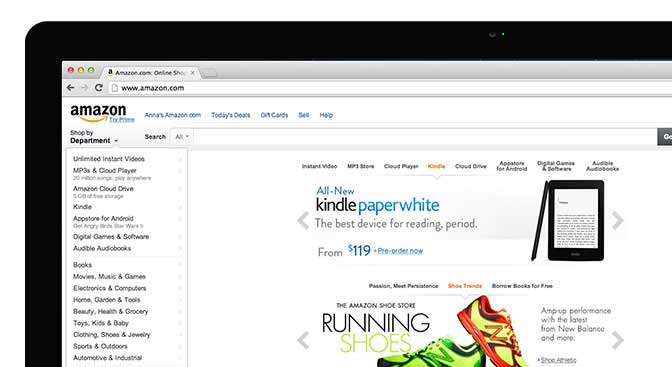Amazon

As famed e-tailer Amazon continued to grow several years ago, the executive team realized that operational planning and capacity management (of space and labor resources) was a critical component to achieving sustainable profitability over the long-term. In a rapidly growing business with high seasonality, a huge catalog of products, a geographically dispersed network of distribution points, and many uncertain variables impacting operations, the team doubled-down on investment in management science approaches coupled with disciplined planning processes.
Approach
Recognition of the number of variables impacting both day-to-day as well as longer-term operations decisions and costs, drove an iterative approach to begin collecting, analyzing, and using operational data to drive more focused and disciplined cross-functional discussion and shared decision-making on key activities. The primary aspects to the approach were:
- Segment the uncertain variables and attack them in ways to control what you can and minimize uncertainty around those that you can’t. To name just a few, the critical variables included:
- Overall demand levels by product line
- Location of demand (i.e., to where will this demand be shipped)
- Product demand correlations
- Supply availability and lead time
- Sources of supply with cost and time trade offs
- Understand the different decision timeframes that are relevant to the operations – and act appropriately for each. For example, within a current week, improved inbound forecasting can enable operators to re-schedule labor or adjust required temporary labor requirements to prevent overtime, or worse, delayed product receipts. On the other hand, supply or demand signals looking out a month or a quarter may modify the overall network allocation strategy, drive changes to overall purchase sources or quantities, or suggest more permanent labor or capacity resource levels.
- Combine the data science and human elements in business process that requires interaction across groups on a regular basis. This approach was never envisioned as a quick fix, but rather as an evolving program. It required executive level buy-in and support, as well as committed resources to manage the information and process as well as develop tools and reports over time as the program crystallized.
Results
The financial results, by any measure, especially looking back over time, speak for themselves. Amazon became profitable ahead of many other ecommerce companies and has continued their success with expansion into many different areas. However, in the immediate aftermath of the initial efforts, the following critical changes were institutionalized.
- Management Science & Modeling: Creation of a Network Optimization organization focused on driving network capacity decisions for the long-term as well as network “allocation” decisions (what product to put where and in what combinations in order to minimize shipping costs, particularly split shipments, and to also minimize “customer click-to-deliver” time.)
- Business Process & Metrics: Creation of a formalized Sales & Operations Planning (S&OP) process between the warehouses and product line groups to streamline and improve the resource and buying decisions for the company. This also drove a set of formalized demand-supply chain metrics that unified the various groups in their incentives.
These changes and the focus they brought to the cross-functional operational activities in turn led to improved profitability, enhanced information and confidence in operational decision-making at all levels, and a sustainable, scalable platform (technology as well as process) to continue to grow the business.
The impact of the program could be seen most keenly in the improved efficiency during peak holiday season performance.
A final note: While these types of efforts are typically initiated as numbers-oriented, they are often a “messy” process that relies on regular (i.e., daily or weekly) communication as the element that gives context and life to those numbers. That cross-functional interaction, with the backing of transparent data, shared metrics, shared goals, and ultimately, a track record of better decisions, is what leads to ongoing innovation and a culture of continuous improvement. The numbers help guide people to make better decisions.
Disclaimer: This work was carried out in part by a Veritec employee while they were employed at Amazon. Many different Amazon employees played key roles in the S&OP process development and evolution.
Client Case Studies
> Amazon
